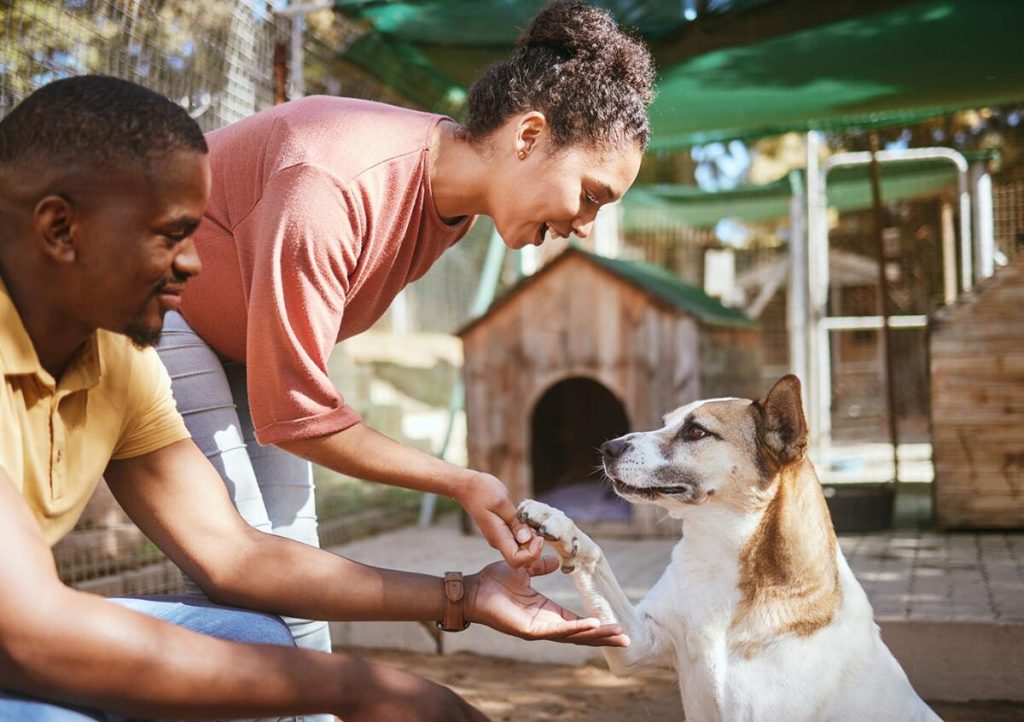Strategies for a Smooth Transition When Adopting a New Pet

Welcoming Your New Companion
Adopting a new pet can be one of life’s most rewarding experiences, offering companionship, joy, and unconditional love. However, it often brings unique challenges that require careful consideration. Transitioning a furry friend into your home is not just about providing food and shelter; it involves a blend of preparation, understanding, and creating a nurturing environment to foster a long-lasting relationship. Here are essential strategies to help you facilitate this important adjustment.
- Research the Breed: Different pets exhibit varying temperaments and needs. For example, Golden Retrievers are often friendly and sociable, making them great family pets, while more independent breeds like the Shiba Inu may require more patience and training. Understanding your pet’s breed will help you anticipate its behaviors, energy levels, and socialization needs, ensuring you can provide the right environment for them to thrive.
- Set Up a Safe Space: Before your pet arrives, prepare a designated area in your home where it can feel secure. This space should include a comfortable bed, food and water bowls, and some toys to encourage exploration. For dogs, this area could be a cozy corner of the living room or a crate in a quiet place. For cats, consider a perch where they can survey their surroundings from a high vantage point. This safe haven allows your new companion to acclimate at its own pace.
- Gather Supplies: Invest in quality pet supplies before your new arrival. This includes food that is appropriate for their age and breed, durable bedding, and a variety of toys that provide stimulation and comfort. Research products that fit the needs of your pet; for instance, a high-energy breed may benefit from interactive toys that challenge their minds, while older pets may need more supportive bedding for their joints.
These initial steps can significantly impact how quickly your pet adjusts to its new environment. Taking the time to thoughtfully consider each element ensures a more comfortable and happy transition, allowing you and your pet to enjoy each other’s company almost immediately.
Moreover, introducing your new pet to family members gradually is an essential step in the integration process. This careful approach can prevent overwhelming your new companion and help build positive associations. To create a nurturing environment, consider the following:
- Creating a Calm Atmosphere: Minimize loud noises and chaotic activity during the initial days. This can be as simple as keeping the television volume low and avoiding gatherings until your pet feels settled.
- Supervised Interactions: If introducing your pet to existing pets, closely monitor these initial meetings. For example, allow them to sniff each other under a door before a face-to-face encounter, or keep dogs on leashes during the introduction to maintain control.
- Establishing a Routine: A consistent daily schedule for feeding, walking, and playtime can help your pet feel secure and understand what to expect. For instance, dogs thrive on routine, so aim for morning and evening walks at the same times daily.
By implementing these strategies, you not only foster a smoother transition but also lay the groundwork for a joyful, lasting relationship with your new pet. Understanding your pet’s needs and behaviors will guide you through this rewarding journey, paving the way for a harmonious coexistence in your shared home.
DISCOVER MORE: Click here for positive training techniques

Preparing for Your New Family Member
As your family eagerly anticipates the arrival of a new pet, the preparatory phase is vital for a seamless transition. Ensuring that both your household and your new furry friend are ready can make a significant difference in the relationship you will cultivate together. Here are some effective strategies to make this adjustment period smoother and more enjoyable for everyone involved.
- Establish a Pet-Friendly Home: Begin by assessing your living space with your future pet in mind. Look for potential hazards like exposed electrical cords, toxic plants, or choking hazards. Creating a safe environment not only protects your new companion but also allows you to breathe easier by knowing they are secure. For those adopting a dog, consider a fenced yard or nearby parks suitable for walks, which will offer them the exercise they need.
- Involve Everyone in the Family: Transitioning to pet ownership is a family affair. Hold a family meeting to discuss the new addition, detailing how each member can contribute to its care. Assign specific tasks such as feeding, walking, or grooming to promote responsibility and create a united front in welcoming the new pet. Kids, in particular, can feel empowered by having an active role in their pet’s care, fostering deeper connections.
- Communication is Key: Inform all family members about the pet’s routines and specific needs to eliminate confusion. If your pet is a dog, for instance, share tips for managing activities like bathroom breaks and playtimes. Establishing open lines of communication ensures that everyone is aligned when it comes to caring for the new addition.
- Anticipate Behavioral Adjustments: Pets, especially those coming from shelters or previous homes, may exhibit stress or anxiety. Understanding these potential behaviors is crucial. Some pets may initially be skittish or withdrawn, while others might show signs of excitement through hyperactivity. Managing expectations and adapting your approach accordingly can make all the difference. For example, providing plenty of opportunities for quiet time can help a nervous pet slowly acclimate to their new environment.
Integrating these strategies into your pet adoption journey can create a smoother transition for both your new companion and your family. As you prepare and educate yourself on what to expect, you create an environment that nurtures the bond between you and your pet. The adoption of a pet is a beautiful commitment, and by implementing these thoughtful measures, you set the stage for a harmonious and fulfilling coexistence.
In addition to preparing your home and family dynamics, forming a solid connection with your new pet requires consistent routines and training strategies. The more you understand your pet’s unique personality and adjust your approach accordingly, the more likely you will establish a lasting and loving relationship.
Understanding Your New Pet’s Needs
When it comes to a successful transition for your new pet, understanding their needs is paramount. Each pet comes with their own unique history and temperament, which requires tailored strategies to ensure a smooth integration into your home. Researching the specific breed or type of pet you are adopting can provide invaluable insight into their characteristics and behaviors. For instance, dogs may require varying levels of exercise, socialization, and training, while cats often have different needs in terms of territory and playtime.
Establishing a Routine
Pets thrive on routine, which helps them feel secure in their new environment. Establishing a consistent schedule for feeding, walks, and playtime can aid in bonding with your new pet and significantly reduce anxiety. This is particularly important for puppies and kittens; a predictable routine cultivates their understanding of expectations within their new home. Be patient, as some pets may require more time to adapt than others—consistency is key to alleviating stress and building trust.
Creating a Safe Space
One of the most effective strategies for a smooth transition is to provide a dedicated safe space for your new pet. This area should be quiet, comfortable, and free from disturbances, allowing your pet to retreat and relax. By equipping this space with their favorite toys and bedding, you can create a nurturing environment that promotes confidence and emotional security. This is especially essential for shy or anxious pets, as it provides them with a sanctuary during their adjustment period.
Healthy Interactions
When introducing your new pet to existing family members or other pets, proceed gradually and ensure that each interaction is positive. Use rewards such as treats or praise to create pleasant associations, helping to build positive relationships. Socialization is crucial; it helps your new pet understand their place within the household and reduces potential conflicts.By implementing these strategies, you’ll pave the way for a successful transition, ensuring that both you and your new companion have the best possible start together. For more tips and resources on ensuring a smooth transition, stay tuned to our ongoing articles.
DIVE DEEPER: Click here to learn more about balanced nutrition for your pets
Building a Strong Bond Through Routine and Training
Once the initial preparations are complete, the next crucial step in ensuring a smooth transition when adopting a new pet involves establishing consistent routines and effective training methods. This phase not only helps your new companion adjust to their environment but also fosters a strong emotional connection between you and your pet. Here are several strategies to enhance bonding and ease the acclimatization process.
- Create a Daily Routine: Pets thrive on structure and predictability. Establishing a consistent daily routine that includes feeding times, bathroom breaks, play sessions, and quiet time can help your new pet feel secure. For dogs, incorporating regular walks can also boost their confidence and reduce anxiety. Cats, on the other hand, may appreciate a schedule for mealtime as well as dedicated playtime in their favorite spots. A structured rhythm not only eases tension but also helps your pet understand what is expected of them.
- Positive Reinforcement Training: Implementing a training program rooted in positive reinforcement is key for a successful transition. Rewarding your pet with treats or praise for good behavior reinforces their learning and strengthens your bond. For example, when teaching commands like “sit” or “stay,” be patient and celebrate small victories. Not only does this approach promote good behavior, but it also nurtures a trusting relationship and contributes to your pet’s overall happiness.
- Socialization Opportunities: Socializing your new pet, particularly for young puppies or kittens, is instrumental in their development. Exposing them to various environments, people, and other animals can equip them with necessary social skills and reduce the likelihood of future behavioral issues. For newly adopted dogs, consider enrolling them in training classes or group playdates. These experiences can enhance their confidence and help them adapt to different social settings.
- Monitor and Adapt: Every pet has a unique personality and learning curve. It’s important to pay close attention to their reactions and adapt your strategies accordingly. For example, while some pets may be eager to explore right away, others might need time to adjust. If your dog appears intimidated during walks, consider identifying quieter routes or practicing leash training in your backyard before venturing into busier areas. This observant approach allows you to address specific needs and minimizes stress for both you and your pet.
- Practice Patience: No transition is without its challenges, and adopting a new pet is no exception. It’s crucial to practice patience as your new family member finds their footing in your home. Some pets will take longer to acclimate than others, experiencing emotional highs and lows during this adjustment period. Remember, allowing them space and time to adapt is as essential as any planned activity. Show understanding as they steadily become more comfortable in their new environment.
As you embark on this journey of building a loving relationship with your new pet, remember that the effort you put into routine and training lays the foundation for fulfilling companionship. By employing these strategies, you not only establish a sense of stability for your pet but also create lasting memories and a deeper bond that will flourish over time.
LEARN MORE: Click here for insights on positive reinforcement in dog training
Conclusion: Embracing the Journey of Pet Adoption
In summary, the process of adopting a new pet can be both rewarding and challenging. By implementing structured strategies for a smooth transition, you set the stage for a healthier relationship and a seamless integration into your household. The importance of establishing a consistent routine, utilizing positive reinforcement for training, and providing ample socialization opportunities cannot be overstated. These elements are not just mere suggestions; they are foundational principles that enhance the bond between you and your pet.
Additionally, recognizing the individuality of each pet allows you to tailor your approach, ensuring that their unique needs are met during this pivotal adjustment period. While practicing patience may feel daunting, it is essential to celebrate small accomplishments and acknowledge the emotional nuances that come with welcoming a new family member.
As you navigate this exciting journey, consider staying informed about animal behavior and training techniques, as these resources can continue to enrich both your understanding and your pet’s lifestyle. Remember, every moment spent nurturing your relationship contributes to a loving environment where trust and security flourish. In the end, the effort you invest today will manifest into a lifetime of companionship, joy, and unconditional love.


